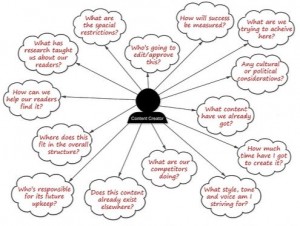 In the world of online marketing, two very different crafts are often confused: content writing, and copy writing. Although they are mostly confused in name only, sometimes the actual text gets mixed up too. One especially guilty group when it comes to this mistake is article marketers who often introduce unnecessary sales copy into their content writing. On the flip side, generic content is frequently put into sales copy by accident, drastically reducing its effectiveness.
In the world of online marketing, two very different crafts are often confused: content writing, and copy writing. Although they are mostly confused in name only, sometimes the actual text gets mixed up too. One especially guilty group when it comes to this mistake is article marketers who often introduce unnecessary sales copy into their content writing. On the flip side, generic content is frequently put into sales copy by accident, drastically reducing its effectiveness.
Online marketing success demands an ability to differentiate between the two. While copy and content both have their proper places, it is rare that they go together, and it can be quite detrimental to a promotional article if they are used improperly. This simple guide explains how to balance sales copy and promotional content, and where to use each of them in your marketing efforts.
Incorporating Sales Content into Articles
It is best to keep direct sales, and sales related talk to a minimal throughout any promotional article. Although the purpose of a promotional article is not necessarily to inform the reader, it is certainly not to sell to them straight away either. If the reader is sold on a product right there in the article, where will they click to buy the product?
Save the sales copy for your landing or sales page. You can always incorporate pre-sales copy into a promotional article, but even then it shouldn’t have an overwhelming presence. The purpose of a promotional article is to achieve one thing – get the reader to your landing page with a slight intention to buy in their minds. If your articles are not accomplishing this, you need to work on flow and content, not sales copy.
Where to Start the Pre-Selling:
The basic structure of any article, or really any written text, is introduction-discussion-conclusion. The first section of your promotional article should introduce a problem, a situation, or an opportunity to your reader. Once you have established this, move on to the body of the text. What is going on in this situation? How could this opportunity translate to the life of the reader? Where are the best places to find these opportunities?
Once you have established and discussed all that you can, introduce a potential solution for the reader; your solution. Do not jump to selling the idea straight away — that is the job of your sales copy — but push the reader slightly so they feel like moving towards it. It is not your job to sell them in the article, only to get them to click on your link.
The Transition from Pre-Sell to Actual Selling:
Your content should work in tandem with your copy to make the sale. Before you start marketing any product through a promotional article, familiarize yourself with the sales page and landing pages that you will be leading readings to, to the point where you can seamlessly incorporate their points into your writing.
People generally love familiarity and trust, not unknown situations. When you can design an article to convince a potential customer into moving to your sales page, and have them arrive there full of confidence and intrigue, you have found article marketing success.
Click here for your copy of my ebook “Straightforward Strategies for E-commerce Success” a great guide full of ideas and practical tips to get you started and on the path to e-commerce success!


